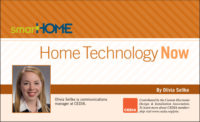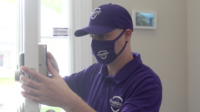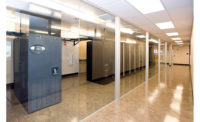
New products, future visions of the integrated digital home and something new – experience -- were in full force at CES. New applications and solutions have been born from the lessons learned during earlier, failed efforts to create the ultimate (Version 1.0 unfriendly) SmartHome.
Customers are forced to listen to music on their PCs or view photos there. If they store content on their home entertainment systems, it is difficult to find and recall. Mobility of content is limited. Those four or five remotes are gathering dust.
Control keypads and panels are not standardized and difficult to use. Overhyped HVAC, lighting, entertainment and alarm control systems disappointed customers, thereby terminating repeat business opportunities. At the same time, half-baked and competing platforms forced dealers to compromise.
What is new? Attitude. The home control industry is focused on the core problems dealer feedback has identified. These are the problems that have stalled homeowners from investing in and realizing their digital lives. Among the key obstacles new technologies and solutions address are:
- Reliability;
- Ease of use;
- Quality/cost ratios; and
- Mobility.
The publishing and exposition industries are doing their homework, too, by studying the market, forming alliances and sharing information with their readers and attendees.
For example, the ISC West Expo March 28-30 in Las Vegas will feature a SmartHome pavilion of exhibitors that will help dealers to market, sell and service their customers more successfully and thereby increase their profits.
Among the new trends and ideas driving the home integration market are:
- Home integrator/installer programs, including:
- Technical support;
- Volume rebates; and
- Installation training.
- Approximately 80 percent of U.S.
homeowners enter their homes through the garage, according to Wayne Dalton
Corp., a garage door manufacturer. As a result, they have created an entry
system that activates lighting and HVAC and confirms from the car’s garage door
control that a home’s intrusion alarms have not been set off.
Of the “moms” surveyed, 87 percent said this integrated SmartHome addition is a “must-have.” The easiest way to sell controls is through access applications. What a great way to open doors with customers (literally) and improve both their digital lives and your business relationship. - The best integrators are also contractors. Successful SmartHome integrators understand their customers’ lifestyles and needs. They work with customers to build a positive digital lifestyle and long-term business relationship that addresses all their low-voltage needs.
- Storage is critical. The ability to find, use and move digital content through a sound multi-terabyte storage system is a necessity. This includes remote storage.
As a SmartHome integrator, your industry has the greatest up-sell opportunity it has ever enjoyed. So get started by calling your customers and offering them a free home audit. Start at the garage -- moms everywhere are waiting.


